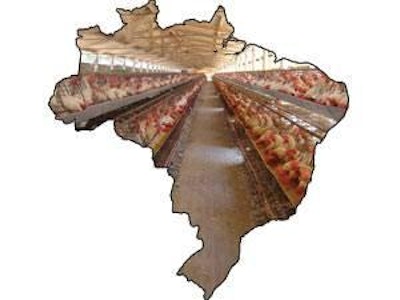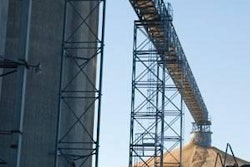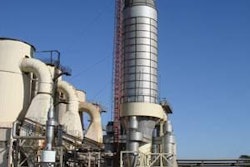
With more than 6 million agricultural enterprises employing about one-quarter of its labor force, Brazil has emerged over the past decade as a key player in global food and agricultural markets. Estimates put Brazilian agriculture sectors at 60 percent field crop and 40 percent livestock, with the greatest recent growth seen in poultry, pork and dairy, a reflection mostly of evolving consumer tastes among its people.
Strong export markets
Until conditions shifted in recent years, Brazil has been able to grow its production capacity for its export market by taking advantage of favorable costs-of-production, implementation of emerging technologies, government incentives for agriculture and aggressive investments in both domestic and foreign agricultural industries. Accessibility of key inputs--land, water and labor--for the agriculture sector has provided the necessary foundation for robust export activity and Brazil's growth in production of crops and meat has coincided well with rising global income. Brazil has also positioned itself as a world leader in biofuel production.
Soybeans, poultry and pork are among the products exported to countries around the world, including the European Union and United Sates. But according to the United States Department of Agriculture Economic Research Service (USDA-ERS)which estimates that Brazil's agro-food sector accounted for over two-thirds of its total trade surplus in 2005China has been the primary target of Brazil's export growth.
Change on the horizon
Earnings from exports have been converted into purchasing power for importation of wheat, for which growing conditions are less than favorable, and occasionally maize, according to the USDA-ERS, which calls Brazil's agro-food trade surplus the largest in the world.
But it predicts blue skies could turn to grey for Brazil's continued growth in agriculture due to escalating international grain prices, ongoing transportation and marketing bottlenecks, a slowdown on expansion of agricultural land, and an appreciating exchange rate.
And growing consumer demand for value-added foods and the boom of Brazil's biofuels industry could mean scarce exportable products, according to the agency. In the 2006-07 crop season, Brazil is projected to produce about 50.3 million metric tons of maize, or about 6.5 percent above last year's level, according to forecasts by the Brazilian Institute of Demographic Geography and Statistic Studies (IBGE). Soybean production has also climbed, with projections of 58 million metric tons this season, a 5.5 percent jump from last year. In addition, Brazil is expected to harvest about 1.35 million metric tons of sorghum this year.
Feed International spoke recently with Dr Ariovaldo Zanni, technical director for the Brazilian Animal Feed Industry Association, about that country's growing grain and feed industry, as well as the impact its expanding poultry industry is having on its markets.
FI: Brazil is a major player in world agriculture. Describe the significance of its feed industry and, in particular, the use of grain by poultry growers.
Dr Ariovaldo Zanni: Brazil is the third biggest worldwide animal feed producer, behind the U.S. and China. Brazilian feed entrepreneurs manufactured 48.3 million metric tons of complete feed and 1.8 million metric tons of mineral supplements locally. The feed business is considered the main corn consumer, demanding 65 percent of all corn harvested, as well as a fabulous soybean consumer, demanding 9 million metric tons (40 percent of all soybean harvested). The feed mill facilities have produced mainly poultry and swine feed which accounts for 70 percent of the total feed manufactured. Poultry flocks are supposed to demand 18.5 million metric tons of corn and 5.7 million metric tons of soybeans. It's important to emphasize sorghum has replaced some amount of corn in a seasonal manner and when its cost feasibility makes it worth it within a least-cost formulation.
FI: How much corn and soybeans does Brazil export?
Dr Zanni: This year, Brazil is going to export 7.8 million metric tons of corn and 12.2 million metric tons of soybeans.
FI: The South of Brazil has traditionally been the poultry production region of the country, but 10 years ago there was en expansion into the Center West, the grain producing area of the country. How has that expansion been going?
Dr Zanni: This trend remains, however, at a slower pace.
FI: Is there still growth in the Center West?
Dr Zanni: Yes, there is. Otherwise, a couple of adverse factors have impaired that continuous growth rate.
FI: How has that affected the feed industry as a whole?
Dr Zanni: In the last three years a higher productive efficiency and reallocation capacity growth on poultry and swine feed allowed producers to find growth again in Sao Paulo and other Southern states.
FI: Is the feed industry very different than 10 years ago because of this expansion?
Dr Zanni: We've been noticing a huge technological development and improved productive capacity. Poultry raisers have housed 36.5 kg of live birds/square foot, instead of 20 kg chicken/square foot a decade ago.
FI: I'd heard that in 2006 there were many new feed mills built. Please comment.
Dr Zanni: It's a fact that too many facilities have been built. However, the main growth factor was due to the improvement of the industrial park already installed. Thanks to the available capacity optimization and state-of the-art equipment for contemporary automation, there is an optimistic view and friendly environment for new industries.
FI: How does the Brazilian feed industry work? Are there many independent feed operations or is it primarily done by the poultry and pig integrators?
Dr Zanni: No doubt the growth on feed production occurred because of both segments: poultry and swine. Otherwise, commercial feed has increased on pet, beef, dairy, horse, fish, shrimp, and other minor businesses, such as goats, ostriches, birds and exotic animals.
FI: Who are the largest feed producers in Brazil and how much do they produce?
Dr Zanni: They are called integrator companies, some of which are used to producing over 4.5 million metric ton annually. The commercial feed business, which represents 25 percent of the Brazilian market, is quite shared among several players.
FI: Technologically speaking, what is the condition of Brazilian feed mills?
Dr Zanni: We can break it down accordingly: 50 percent at higher technological level, 25 percent at standard level and the remaining at lower level.
FI: 2005 was a great year for the Brazilian broiler industry, while 2006 was terrible and 2007 seems to be a recovery year. How has that affected the feed industry?
Dr Zanni: Focusing on the animal feed market in the first months of this year, we conclude that the overall behavior has played out in a different way. In the same period of 2006, the livestock business was jeopardized because of two adverse factors. There were difficulties in shipping beef and pork as a consequence of foot and mouth disease outbreaks occurring in some Brazilian regions at the end of 2005. Additionally, Brazil stopped exports of poultry due to European and Asian barriers as a consequence of avian influenza outbreak in the Middle East, Africa and Europe. In summary, it was necessary to review the estimations in 2006 from 8.7 percent growth to a sluggish movement of only 2.7 percent and below the worldwide average.
FI: How is 2007 looking?
Dr Zanni: Considering how well the first half has performed, we strongly believe the supposed 6.5 percent growth rate claimed earlier will be over passed, except upon an unusual and tragic occurrence. The reason is the 10 percent growth rate achieved in the first quarter of this year when compared to the same period of 2006. It's important to emphasize this prosperous situation has remained the same. The assumption is that feedstuff prices for animal feed will increase in coming months, pushed by turmoil on corn and soybean prices as well as an increase on imported additive costs. Consequently, this scenario shall increase the feed cost at a 22 percent rate in relation to the average cost displayed last year. Imported additives have increased at a 15 percent rate and have promoted an 18 percent increase rate on feed costs, and at least 12 percent on poultry production costs. From the end of the 1980s, the sector has gone through a massive change, coming from a 5 million metric ton amount produced to more than 47 million metric ton in 2005. Besides, we've produced almost 2 million metric ton of mineral supplements. The sector has approached new technologies and utilization of other products appointed to animal feed, such as sorghum, pearl millet, wheat meal, enzymes and other additives. Furthermore, feed business is considered the biggest corn and soybean consumer, with a demand of about 65 percent and 40 percent of the overall crops, respectively.
FI: Are there any particular bright spots?
Dr Zanni: The forecast of the feed sector for 2007 is a growth of 10 percent based on the following evolution:
-
Bird feed, 7.2 millions tons (1st trimester 2007) compared to 6.5 millions tons (1st trimester 2006).
-
Swine feed, 3.5 millions tons (1st trimester 2007) compared to 3.2 millions tons (1st trimester 2006).
-
Bovine feed, 1.4 millions tons (1st trimester 2007) compared to 1.2 millions tons (1st trimester 2006).
It is important to emphasize that in the case of mineral supplements for bovines, current indicators show a growth above 10 percent over commercialized volume in 2006. The continuity of this tendency will depend on the intensity of the dry season on Center West and values that indicate the price of an "arroba" (25.37 pounds) in between-harvest season.
FI: Are there any lingering problems?
Dr Zanni: The insufficient docking infrastructure and concentration of road transport continues and they compromise effectively the competitiveness of national agriculture and livestock, due to the high costs of freight and delay on the internal transport of grains, other imported inputs and of the finished product itself. The feed sector seeks a compensation by strengthening the reliable supplier image, already recognized by international buyers, through the implementation of Good Manufacturing Practices in establishments, animal feed producers (feed and premix mills), livestock (independent producers, cooperatives and integrators) and meat processors (slaughterhouses), with full traceability of the production chain (from the field to the consumer) and guaranteed sustainability with a view to preserving the environment and life quality of people.
FI: How are the higher feed costs in the US affecting the Brazilian industry?
Dr Zanni: Despite the guaranteed future in relation to corn and soy supply, there is pressure over basic input prices, which are presented in a higher basis than those previously calculated. Worldwide stocks of corn are 6 percent lower, and the situation is aggravated by a higher ethanol production demand in the United States. Regarding soy, trends indicate price recovery in international markets, despite its recent low. Wheat bran, imported from Argentina, has been suffering a reduction due to the lack of electric energy for mill supply. Alternatively, boarding through Canada and United States are overtaxed, which does not happen in commercial transactions within Mercosul (regional network).
FI: What are companies doing to reduce the impact of feed costs?
Dr Zanni: Companies have been trying to minimize the impact through investments on purchase of new equipment and implementation of new management models, with the purpose to reach a better performance in productivity. At the same time, the loss of earnings in the sector has been absorbed among different building blocks of the value chain, so that the final consumer is not burdened.
FI: Are there any lingering problems?
Dr Zanni: Among the main challenges of the feed sector is its ability to be a strong and reliable segment recognized by international buyers.
To succeed, it will be necessary for overall implementation of:
-
Good Manufacturing Practices in animal feed plants (premix and feed factories), livestock facilities (independent producers, cooperatives and integrators), and meat processing facilities (slaughterhouses);
-
full traceability capabilities within the production chain, from the field to the consumer; and
-
a guaranteed sustainability view as a true friend to the environment and human being life quality compliance.
By the way, those questions not only concern the Brazilian industry, but also the industry of the whole Latin America, Mexico and Caribbean. That is why, during the II Global Feed & Food Congress, industries and government representatives of Brazil, Argentina, Mexico, Chile, Uruguay, Colombia and Paraguay approved the "creation" of the Association of Animal Feed Industries of Latin America, Mexico and Caribbean considered to be of crucial importance by FAO and by the International Feed Industry Federation (IFIF).
FI: What will the Brazilian feed industry look like in 5 years?
Dr Zanni: It should continue growing at about10 percent a year or slightly above the worldwide average.
FI: Will there be an expansion in feed operations?
Dr Zanni: The biggest expansion will occur in the segments of poultry and swine, and therefore in the market controlled by integrators. Also, there will be an expansion in the segment of commercial feed, specialty dog and cat food, and dairy feed.
FI: If there will be expansion, will it be based on new construction or on buying-out of other companies?
Dr Zanni: The next years will be favorable to the construction of new factories. I (also) believe there will be a continuous and faster process of consolidation.
FI: What are your expectations for feed exports?
Dr Zanni: Exports shall be more favorable for dog and cat food, due the abundance of animal by-products demanded, and for additives or premixtures for feed. Nowadays, the local currency valuation has become a competitive disadvantage to export agriculture and livestock feed.





.jpg?auto=format%2Ccompress&fit=crop&h=167&q=70&w=250)











